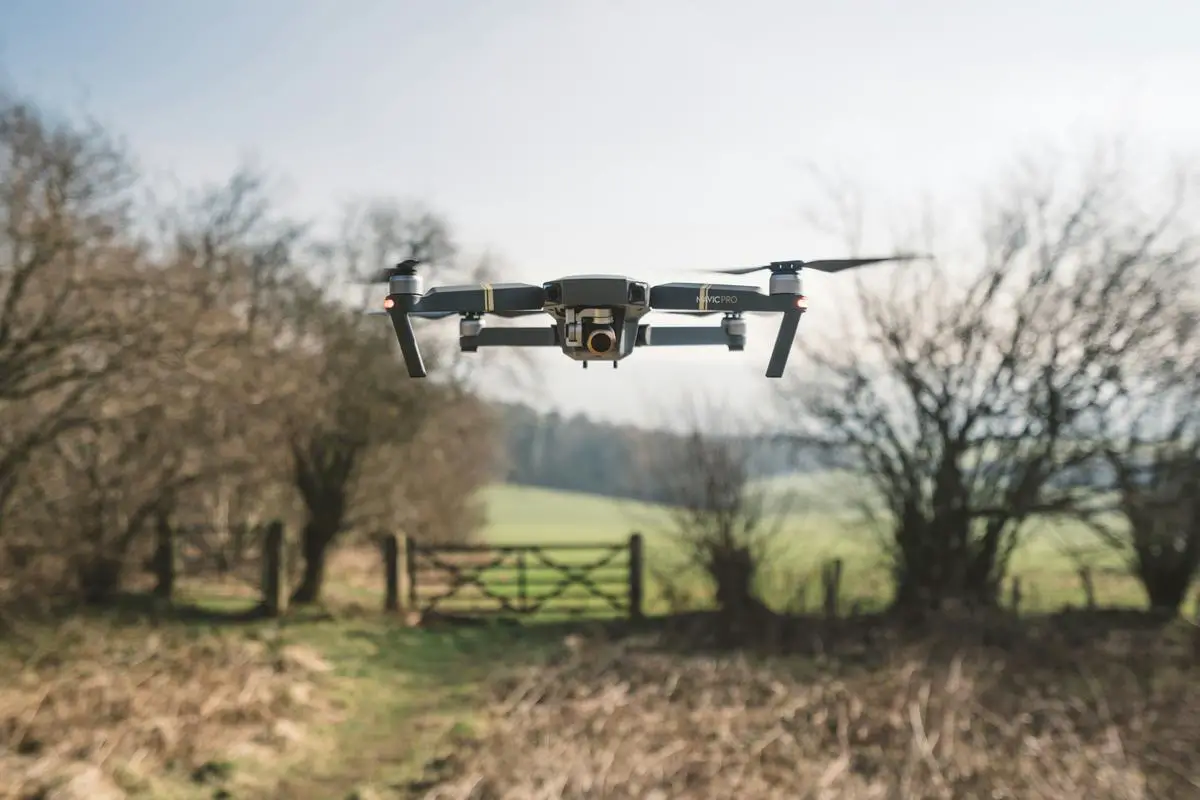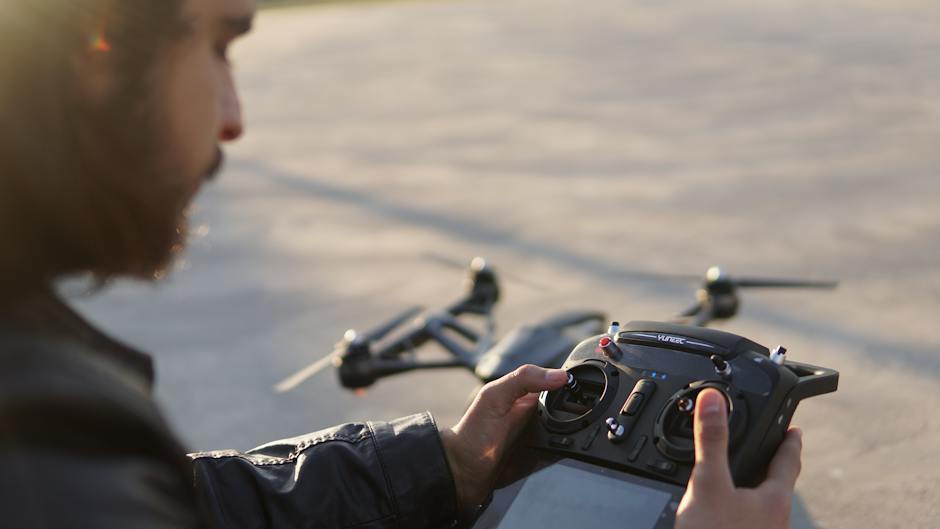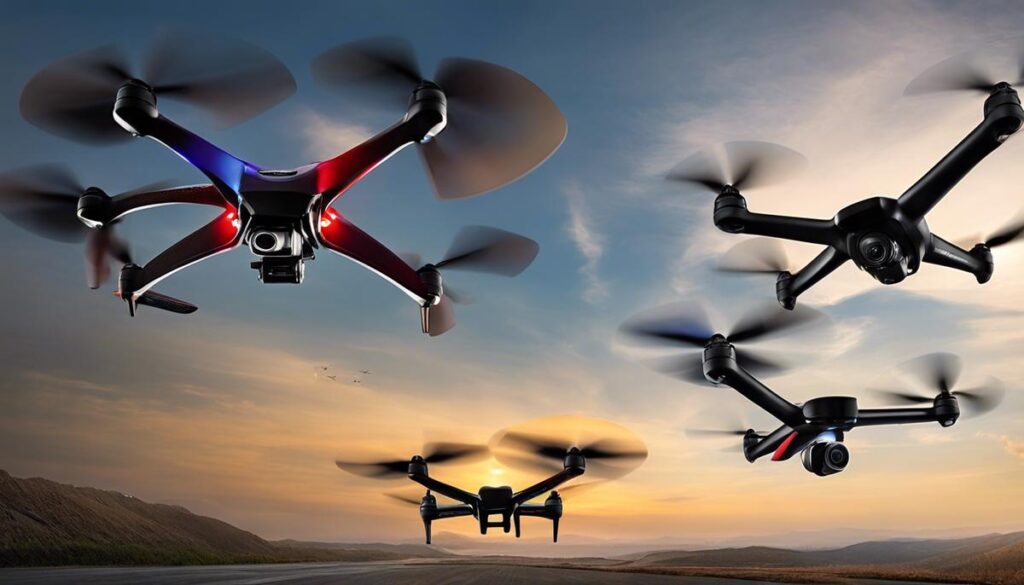Embarking on the journey of mastering FPV drone flight demands not only skill and precision in the control of your craft but also a keen understanding of the delicate interplay between its components. Amongst these, the propeller stands as a centerpiece of aerial performance—a critical element that harnesses the raw power of the motors and translates it into the graceful dance of flight. This treatise aims to demystify the various propeller types and their unique characteristics, guiding enthusiasts through the labyrinth of choices to find the perfect match for their aerial aspirations. From blade count to pitch, from material to design, each decision molds the aerodynamic narrative of your drone, and with this knowledge at your disposal, the skies will no longer be a canvas of chance, but of your deliberate artistry.
Types of Propellers and Their Characteristics
Choosing the Perfect Propeller for Your FPV Drone Flights
Attention all FPV drone enthusiasts! Have you ever stood in a hobby shop, staring at the walls lined with different types of propellers and felt completely overwhelmed? You’re not alone. Propellers might seem like simple accessories, but they can make or break the performance of your FPV drone. Let’s dive right in and find out how to pick the best ones for your flying adventures!
Firstly, here’s a quick word on propeller basics. Propellers are the trusty sidekicks of your drone’s motors, generating the right amount of lift and thrust. Each propeller is described by two numbers, like 5×4.5. The first number tells you the propeller’s diameter in inches, and the second number is the pitch – basically how far it would move forward in one rotation. Easy, right?
Now, for FPV (First Person View) drones, it’s all about balance. You want a propeller that gives you a smooth ride and precise control, especially if you’re racing or performing aerial acrobatics.
For the racing drones zipping through courses with sharp turns and quick sprints, think light and snappy. Smaller propellers with a higher pitch (like the 5×4.5) speed up fast and give you that punch to zigzag like a pro. But watch out – these can drain your battery quicker!
When soaring through the sky for that perfect aerial shot, it’s all about the smooth, sustained flights. That’s where larger propellers with a lower pitch step in. A 6×4 prop could have you cruising with grace, providing more stability and longer air time. And that means more breathtaking views and less landing to charge your battery!
Tri-blades or Quad-blades, anyone? More blades add more finesse to your flight but could ask a lot from your motors and battery. Beginners might want to stick with twin-blades – they’re the all-around good guys that will get you flying steady without a hiccup.
Remember, flying conditions matter too. On windy days, a sturdier prop with less pitch can help you maintain control without being tossed around like a leaf.
Lastly, let’s not forget about materials – plastic props are cheap and cheerful, great for learning. But when you’re ready to step up your game, carbon fiber props come in strong, offering sharper response and resilience against those occasional crashes.
In a nutshell, there’s a propeller for every drone and every pilot. Mix and match within your drone’s capabilities, and you’ll find the right set that matches your flying style. Just like finding the perfect pair of wings, once you do, there’ll be no stopping the awesome flights ahead!

Impact of Propeller Selection on Performance
Mastering the Spin: Fine-Tuning Your FPV Drone with the Perfect Propellers
Have you ever wondered why two FPV drones, seemingly identical in design, can perform so differently in the skies? Much of that difference boils down to the propellers – those spinning blades that give our drones their lift and thrust. It’s not just about what looks cool or fits; it’s about finding the prop that matches your flying style and the tasks you’ve got lined up for your drone.
Size Matters – Prop Diameter and Pitch
When we talk about propeller size, we’re looking at two things: diameter and pitch. The diameter is basically how big the prop is from tip to tip. Bigger props generate more lift and can be more efficient, but they also need more power to keep them spinning. The pitch refers to how far a propeller would move through the air in one single rotation – think of it like the gear on a bike. Lower pitch props give better control and stability, which is a dream for precision flying. High pitch means more speed and acceleration, getting you where you want to go in a flash.
Propeller Weight and Drone Handling
The weight of the propellers also plays its part. Lighter props can spin up and change speed faster, making for snappy changes in direction and altitude. The trade-off? They might not have the durability or stability of their heavier counterparts. So, if you’re one for sharp turns and agile maneuvers, you might lean towards lighter props, but if longevity is your game, a slightly heavier prop might be your best bet.
The Balancing Act
Let’s not forget about balance! A well-balanced propeller leads to smoother flights and puts less strain on motors. If the props are off-kilter, it can cause vibrations, reducing the quality of your flight experiences. Sometimes you might even have to balance them yourselves with a little sanding here or there. The effort pays off in the air – smooth flying, less wear on your drone, and better footage.
Hub Size and Propeller Attachment
Then there’s the hub – the part of the prop that actually connects to the motor. Hubs come in all shapes and sizes. The right hub ensures that the prop stays securely attached to the motor, no matter if you’re rocketing straight up or diving like a falcon. Always double-check that the propeller’s hub matches your drone’s motor, or you could be in for a spinning disaster.
To sum up, when you’re ready to go beyond just the basics of FPV drones and refine your experience, propeller choice becomes your secret weapon. It’s about way more than just which prop fits onto your drone. Look at diameter and pitch to match your speed and control needs, weigh the pros and cons of propeller weight, and always, always make sure those props are balanced and snugly fit your motors. The difference might not just be noticeable – it could be what takes your FPV flight from good to spectacular.

Photo by linfordmiles on Unsplash
Propeller Tuning and Optimization
Fine-Tuning Your FPV Drone: The Role of Propeller Adjustments
Dive into the lesser-discussed realm of propeller customization and its impact on fine-tuning your FPV drone. After mastering the basics and acknowledging the influence propellers have on your drone’s agility, it’s time to address the tweaks that can elevate your flight performance to new heights.
When it’s about squeezing every ounce of performance from your FPV drone, propeller fine-tuning steps in. Like tuning a musical instrument for the perfect pitch, adjusting your drone’s propellers can lead to optimal control and responsiveness. It’s all about precision: even the slightest modifications can have considerable effects.
For those who enjoy tweaking their machines, balancing your propellers is a hidden gem of a tip. The process can sound daunting but fear not; with patience and the right tools, you’ll minimize vibration and maximize efficiency. Grab a prop balancer from the local hobby shop and start refining your prop’s equilibrium. A well-balanced propeller is synonymous with smoother flights and can also spare your motors from undue strain.
Always inspect your propellers for damage before and after flights. A chipped or cracked prop can throw off the balance and hinder your drone’s performance. It’s more than just an aesthetic issue; it’s a matter of safety and aerodynamics.
Consider the adjustable propellers, with varying angles, also known as variable-pitch propellers. These gems allow pilots to change the pitch of the blades in flight, directly affecting thrust and power. This option is not for newbies, but seasoned pilots will revel in the flexibility they offer for responsiveness and speed.
Pitch tuning is another aspect to consider for your FPV escapades. Adjusting the angle of your prop’s pitch might sound minor, but it can have a significant effect on how the drone accelerates and maintains altitude. Complete this adjustment with care; a steeper pitch offers more thrust but can reduce maneuverability.
Last but not least, don’t shy away from experimenting with different settings in safer environments. Compare how your FPV drone handles with small tweaks to your propellers. It’s not just about the gear but how you wield it. Constantly adjust and test — you’ll soon discover the best combination for your flying aspirations.
Fly smarter, not harder, and your FPV drone will become an extension of your will, cutting through the sky with grace and power.

Having soared with the eagles and dissected the physics that binds us to the firmament, we find ourselves at the cusp of a personal evolution in the realm of FPV flight. Propeller tuning and optimization, while steeped in empirical data and aerodynamic theory, is an art form that reveals its true beauty in the application. It is in the crucible of the open skies where theory is transformed into kinetic poetry. The diligent pursuit of that perfect harmony between drone and pilot culminates not just in optimized performance, but in a symbiotic flight experience that exhilarates the soul. Let this guide be your wind as you tailor the breath of your propellers to the whims of your aerial ambitions, forever pushing the boundaries of what is possible amid the clouds.
Originally posted 2024-01-19 02:06:31.




